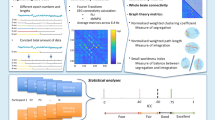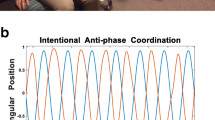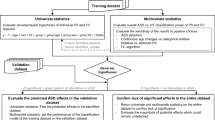Abstract
This study explores how EEG connectivity measures in children with ADHD ages 7–10 (n = 140) differ from an age-matched nonclinical database. We differentiated connectivity in networks, Brodmann area pairs, and frequencies. Subjects were in the International Collaborative ADHD Neurofeedback study, which explored neurofeedback for ADHD. Inclusion criteria were mainly rigorously diagnosed ADHD and a theta/beta power ratio (TBR) ≤ 4.5. Using statistical and machine learning algorithms, connectivity values were extracted in coherence, phase, and lag coherence at all Brodmann, subcortical, and cerebellar areas within the main networks in all EEG frequencies and then compared with a normative database. There is a higher rate of dysregulation (more than ± 1.97SD), in some cases as much as 75%, of the Brodmann pairs observed in coherence and phase between BAs 7, 10, and 11 with secondary connections from these areas to BAs 21, 30, 35, 37, 39, and 40 in the ADHD children as compared to the normative database. Left and right Brodmann areas 10 and 11 are highly disconnected to each other. The most dysregulated Brodmann Areas in ADHD are 7, 10, and 11, relevant to ADHD executive-function deficits and provide important considerations when developing interventions for ADHD children.



Similar content being viewed by others
References
Arnold, L. E., Arns, M., Barterian, J., Bergman, R., Black, S., Conners, C. K., Connor, S., Dasgupta, S., deBeus, R., Higgins, T., Hirshberg, L., Hollway, J. A., Kerson, C., Lightstone, H., Lofthouse, N., Lubar, J., McBurnett, K., Monastra, V., Buchan-Page, K., … Williams, C. E. (2021). Double-blind placebo-controlled randomized clinical trial of neurofeedback for attention-deficit/hyperactivity disorder with 13-month follow-up. Journal of the American Academy of Child & Adolescent Psychiatry, 60(7), 841–855. https://doi.org/10.1016/j.jaac.2020.07.906
Björkenstam, E., Pierce, M., Björkenstam, C., Dalman, C., & Kosidou, K. (2020). Attention deficit/hyperactivity disorder and risk for non-affective psychotic disorder: The role of ADHD medication and comorbidity, and sibling comparison. Schizophrenia Research, 218, 124–130. https://doi.org/10.1016/j.schres.2020.01.021
Cuffe, S. P., Visser, S. N., Holbrook, J. R., Danielson, M. L., Geryk, L. L., Wolraich, M. L., & McKeown, R. E. (2020). ADHD and psychiatric comorbidity: functional outcomes in a school-based sample of children. Journal of Attention Disorders, 24(9), 1345–1354. https://doi.org/10.1177/1087054715613437
Green, C. D., Dvorsky, M. R., Langberg, J. M., Jones, H. A., & Floyd, A. L., Jr. (2020). The impact of social determinants of health on the efficacy of school-based interventions for adolescents with ADHD. School Mental Health, 12(3), 580–594. https://doi.org/10.1007/s12310-020-09367-w
Jasper, H. H. (1958). Report of the committee on methods of clinical examination in electroencephalography. Electroencephalography and Clinical Neurophysiology., 10(2), 370–375. https://doi.org/10.1016/0013-4694(58)90053-1
Jasper, H. H., Solomon, P., & Bradley, C. (1938). Electroencephalographic analyses of behavior problem children. American Journal of Psychiatry, 95(3), 641–658.
Johnstone, J., Gunkelman, J., & Lunt, J. (2005). Clinical database development: Characterization of EEG phenotypes. Clinical EEG and Neuroscience, 36(2), 99–107.
Kerson, C., deBeus, R., Lightstone, H., Arnold, L. E., Barterian, J., Pan, X., & Monastra, V. J. (2020). EEG theta/beta ratio calculations differ between various EEG neurofeedback and assessment software packages: Clinical interpretation. Clinical EEG and Neuroscience, 51(2), 114–120.
Linke, J. O., Abend, R., Kircanski, K., Clayton, M., Stavish, C., Benson, B. E., Brotman, M. A., Renaud, O., Smith, S. M., Nichols, T. E., Leibenluft, E., Winkler, A. M., & Pine, D. S. (2020). Shared and anxiety-specific pediatric psychopathology dimensions manifest distributed neural correlates. Biological Psychiatry, 89(6), 579–587. https://doi.org/10.1016/j.biopsych.2020.10.018
McCarthy, H., Skokauskas, N., Mulligan, A., Donohoe, G., Mullins, D., Kelly, J., Johnson, K., Fagan, A., Gill, M., Meaney, J., & Frodl, T. (2013). Attention network hypoconnectivity with default and affective network hyperconnectivity in adults diagnosed with attention-deficit/hyperactivity disorder in childhood. JAMA Psychiatry, 70(12), 1329–1337. https://doi.org/10.1001/jamapsychiatry.2013.2174
Molina, B. S. G., Hinshaw, S. P., Swanson, J. M., Eugene Arnold, L., Vitiello, B., Jensen, P. S., Epstein, J. N., Hoza, B., Hechtman, L., Abikoff, H. B., Elliott, G. R., Greenhill, L. L., Newcorn, J. H., Wells, K. C., Wigal, T., Gibbons, R. D., Hur, K., & Houck, P. R. (2009). The MTA at 8 Years: Prospective follow-up of children treated for combined-type ADHD in a multisite study. Journal of the American Academy of Child and Adolescent Psychiatry, 48(5), 484–500. https://doi.org/10.1097/CHI.0b013e31819c23d0
Pascual-Marqui, R. D., Michel, C. M., & Lehmann, D. (1994). Low resolution electromagnetic tomography: A new method for localizing electrical activity in the brain. International Journal of Psychophysiology, 18, 49–65. https://doi.org/10.1016/0167-8760(84)90014-x
Pineda-Alhucema, W., Aristizabal, E., Escudero-Cabarcas, J., et al. (2018). Executive Function and theory of mind in children with ADHD: A systematic review. Neuropsychology Review, 28, 341–358. https://doi.org/10.1007/s11065-018-9381-9
Reale, L., Bartoli, B., Cartabia, M., Zanetti, M., Costantino, M. A., Canevini, M. P., Termine, C., Bonati, M., Lombardy ADHD Group. (2017). Comorbidity prevalence and treatment outcome in children and adolescents with ADHD. European Child & Adolescent Psychiatry, 26(12), 1443–1457. https://doi.org/10.1007/s00787-017-1005-z
Roley-Roberts, M. E., Bergman, R., Pan, X., Tan, Y., Hendrix, K., deBeus, R., Kerson, C., Arns, M., Ging Jehli, N. R., Connor, S., Schrader, C., & Arnold, L. E. (2022). For which children with ADHD is TBR neurofeedback effective? Comorbidity as a Moderator. Manuscript under review.
Sidlauskaite, J., Sonuga-Barke, E., Roeyers, H., & Wiersema, J. R. (2016). Altered intrinsic organisation of brain networks implicated in attentional processes in adult attention-deficit/hyperactivity disorder: A resting-state study of attention, default mode and salience network connectivity. European Archives of Psychiatry in Clinical Neuroscience, 266, 349–357. https://doi.org/10.1007/s00406-015-0630-0
Solanto, M., & Scheres, A. P. (2020). Feasibility, acceptability, and effectiveness of a new cognitive-behavioral intervention for college students with ADHD. Journal of Attention Disorders. https://doi.org/10.1177/1087054720951865
Sonnack, M., & Brenneman, A. (2014). Treatment strategies for ADHD in preschool and school-age children. Journal of the American Academy of Physican Assistants, 27(10), 22–26. https://doi.org/10.1097/01.JAA.0000453859.08958.31
Telford, C., Green, C., Logan, S., Langley, K., Thapar, A., & Ford, T. (2013). Estimating the costs of ongoing care for adolescents with attention-deficit hyperactivity disorder. Social Psychiatry and Psychiatric Epidemiology, 48(2), 337–344. https://doi.org/10.1007/s00127-012-0530-9
Thatcher, R. W., North, D., & Biver, C. (2005). Evaluation and validity of a LORETA normative EEG database. Clinical EEG and Neuroscience, 36(2), 116–122. https://doi.org/10.1177/155005940503600211
Uddin, L. Q., Kelly, A. M., Biswal, B. B., Margulies, D. S., Shehzad, Z., Shaw, D., Ghaffari, M., Rotrosen, J., Adler, L. A., Castellanos, F. X., & Milham, M. P. (2008). Network homogeneity reveals decreased integrity of default-mode network in ADHD. Journal of Neuroscience Methods, 169(1), 249–254. https://doi.org/10.1016/j.jneumeth.2007.11.031
Uytun, M. C., Karakaya, E., Oztop, D. B., Gengec, S., Gumus, K., Ozmen, S., Doğanay, S., Icer, S., Demirci, E., & Ozsoy, S. D. (2017). Default mode network activity and neuropsychological profile in male children and adolescents with attention deficit hyperactivity disorder and conduct disorder. Brain Imaging and Behavior, 11(6), 1561–1570. https://doi.org/10.1007/s11682-016-9614-6
Weller, E. B., Weller, R. A., Fristad, M. A., Rooney, M. T., & Schecter, J. (2000). Children’s interview for psychiatric syndromes (ChIPS). Journal of the American Academy of Child and Adolescent Psychiatry, 39(1), 76–84. https://doi.org/10.1097/00004583-200001000-00019
Acknowledgements
We would like to thank the following Saybrook University students for their help in developing clean EEGs for evaluation: Alison Ooms, Emily Thomas, Jillean Veroneau, Rebekah Walker, and Kristin Williams, as well as Seattle-based clinician, Sal Barba.
Funding
Dr. Cynthia Kerson has received NIMH funding for the ICAN study, Dr. Roger deBeus has received research funding from NIMH. Dr. Roley-Roberts has received research funding from LB692 Nebraska Tobacco Settlement Biomedical Research Development Program, American Psychological Foundation, Foundation for Education and Research in Biofeedback and Related Sciences, Foundation for Neurofeedback and Neuromodulation Research, NIMH, NIGMS, and NIH. Dr. Arnold has received research funding from Supernus Pharmaceuticals (USA), Roche/Genentech Phanaceuticals (Switzerland), Otsuka Pharmaceuticals (Japan), Axial, and YoungLiving Essential Oils (USA) and National Institute of Health (USA, R01 MH 100144), has consulted with Pfizer Parmaceuticals (USA), and been on advisory boards for Otsuka (Japan) and Roche/Genentech (Switzerland).
Author information
Authors and Affiliations
Contributions
CK., JL, AGL, MR-R., and RdB. wrote the main manuscript and prepared all figures and graphs. PX(J). provided statistical analyses. TA., MY., SS, YD., and WZ. prepared statistical and machine learning Monte Carlo analyses. All authors reviewed the manuscript.
Corresponding author
Ethics declarations
Conflict of interest
Authors have no conflicts of interest.
Ethical Approval
This study is part of the ICAN study, which received IRB approval through Ohio State University. IRB # 2013H0417.
Additional information
Publisher's Note
Springer Nature remains neutral with regard to jurisdictional claims in published maps and institutional affiliations.
Supplementary Information
Below is the link to the electronic supplementary material.
Rights and permissions
Springer Nature or its licensor (e.g. a society or other partner) holds exclusive rights to this article under a publishing agreement with the author(s) or other rightsholder(s); author self-archiving of the accepted manuscript version of this article is solely governed by the terms of such publishing agreement and applicable law.
About this article
Cite this article
Kerson, C., Lubar, J., deBeus, R. et al. EEG Connectivity in ADHD Compared to a Normative Database: A Cohort Analysis of 120 Subjects from the ICAN Study. Appl Psychophysiol Biofeedback 48, 191–206 (2023). https://doi.org/10.1007/s10484-022-09569-9
Accepted:
Published:
Issue Date:
DOI: https://doi.org/10.1007/s10484-022-09569-9




